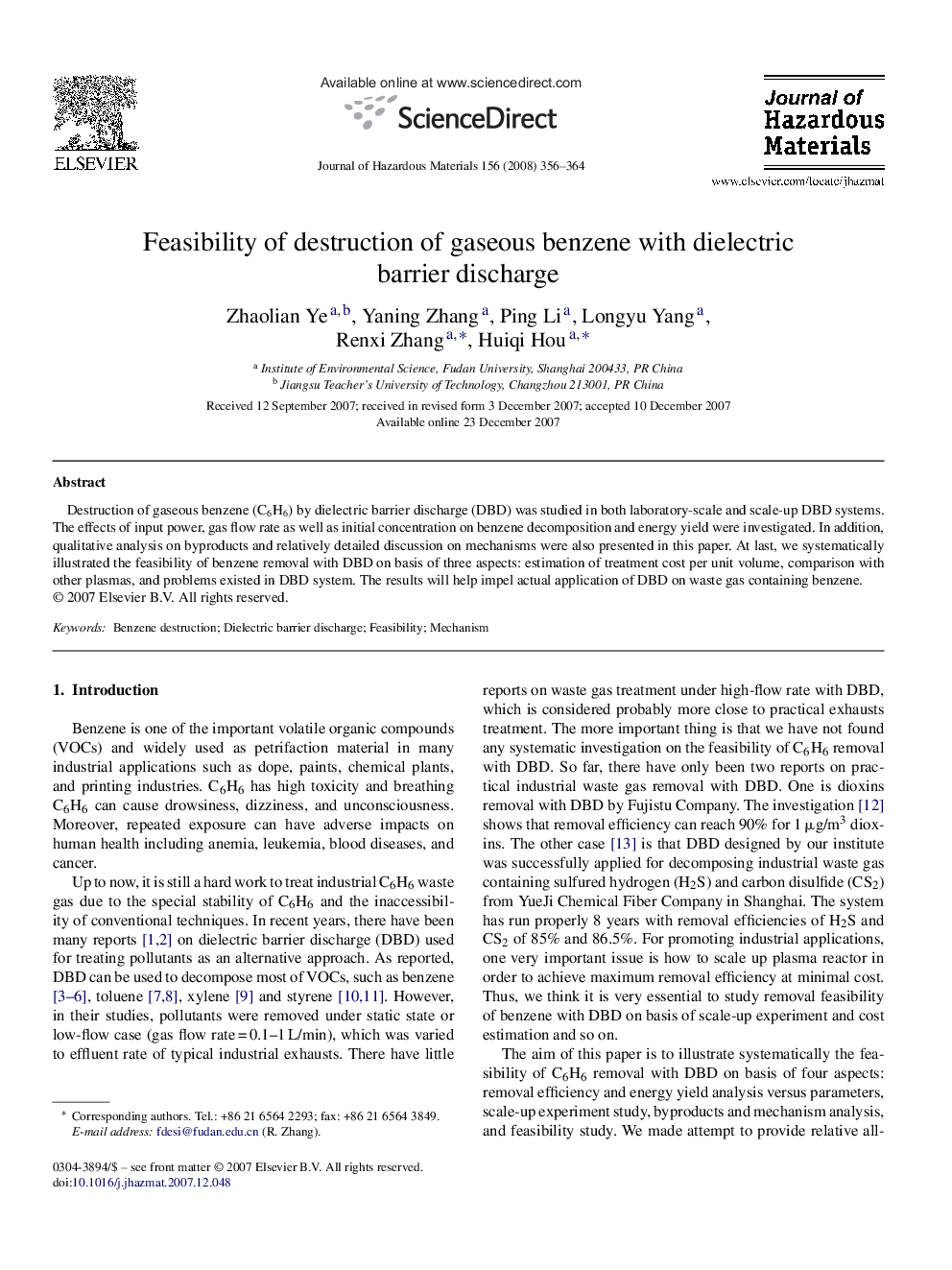| Article ID | Journal | Published Year | Pages | File Type |
|---|---|---|---|---|
| 583248 | Journal of Hazardous Materials | 2008 | 9 Pages |
Abstract
Destruction of gaseous benzene (C6H6) by dielectric barrier discharge (DBD) was studied in both laboratory-scale and scale-up DBD systems. The effects of input power, gas flow rate as well as initial concentration on benzene decomposition and energy yield were investigated. In addition, qualitative analysis on byproducts and relatively detailed discussion on mechanisms were also presented in this paper. At last, we systematically illustrated the feasibility of benzene removal with DBD on basis of three aspects: estimation of treatment cost per unit volume, comparison with other plasmas, and problems existed in DBD system. The results will help impel actual application of DBD on waste gas containing benzene.
Related Topics
Physical Sciences and Engineering
Chemical Engineering
Chemical Health and Safety
Authors
Zhaolian Ye, Yaning Zhang, Ping Li, Longyu Yang, Renxi Zhang, Huiqi Hou,
